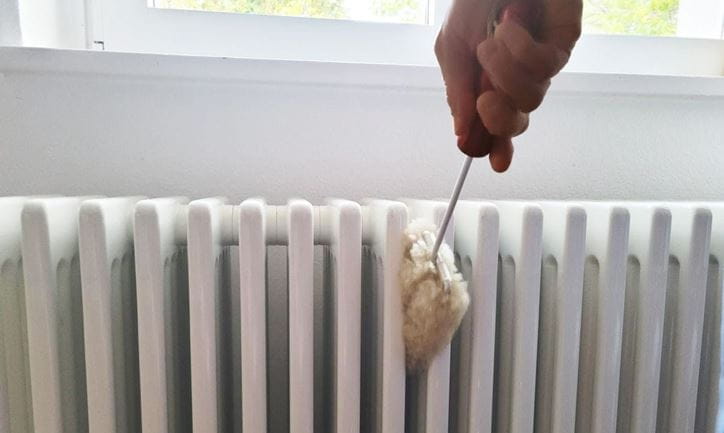- Electrical heating
- Hydronic heating
- Insights
- Radiators
15 tips to get your heating system ready for the heating season
Central heating system ready for winter
To ensure your central heating system is running tip-top and your radiators are good to go for another heating season, have a look at these to-dos and check them all off your list.
1. Schedule a professional maintenance appointment.
It’s a good idea to have your heating system checked by an HVAC professional at least once a year. This helps to detect heating issues so that you can tackle any problems early on and are sure your central heating system is operating safely and efficiently.
2. Make sure your radiators are clean.
Dusting your radiators with a slightly damp cloth or dry microfiber cloth once in a while helps to keep their heat output at an optimal level. If you have a fan radiator such as the Ulow E2 or convectors, it’s also a good idea to check the underside for any build-up of dust. If there is, simply hold your vacuum cleaner to the underside to clear the dust. No need to remove the casing.
3. Check your carbon monoxide detector.
Although it’s not an integrated part of the central heating system, it’s still a good idea to check your carbon monoxide detector since it will keep you safe when your heating system is being used. Simply press the test button to ensure the sensor is working properly. If it doesn’t respond, replace the batteries. Also check to see if the date indicating when the detector needs to be replaced hasn’t expired.
4. Check the heat source.
If you’re using a boiler, have a look to see if the water pressure hasn’t dropped below 1 bar. If it has, top it up to avoid water flow issues. In case you’re using a heat pump, check if there’s nothing blocking the airflow, such as leaves or other debris, that could affect the pump’s efficiency. While you’re inspecting the heat source, also have a quick look at the settings to see if your boiler or heat pump is no longer in summer mode and set to run the hot water as well as the heating system.
5. Check the thermostatic radiator valves
The thermostatic radiator valves are typically turned off in summer. So now set them all to the required temperature to ensure you can enjoy a cosy warmth. In rooms that aren’t used frequently, you can keep the radiator valves at a lower but constant level rather than turned off to ensure indoor climate comfort.
6. Check the heating controls.
Turn the thermostat up to see if the heat comes on and the rooms are actually heated to the set temperature. Let it run for a little while to ensure your heating system is fully ready to go. If you notice the heat doesn’t come on, we recommend to get in touch with your local HVAC technician.
7. Check if the radiators are warm from top to bottom
When you’ve turned up the thermostat and the heating system has been on for a few minutes, check if they’re warming up completely, from top to bottom. If that’s not the case and there are cold spots or the radiators are cold at the top, you need to bleed your radiators. You can find out more about bleeding your radiators in our dedicated article.

Dusting your radiators once in a while helps to keep their heat output at an optimal level.
Electrical heating ready for winter
Are you using electric radiators instead of or in combination with a central heating system? Then here are a few tips to get your electric heating in shape for the heating season that’s coming.1. Before you start, check that the radiator is turned off. Make sure you unplug it as well. If the radiator is hot, let it cool down for a while.
2. Check to see that nothing has fallen behind the radiator during the summer season that could damage the radiator or interfere with its operation.
3. Clean the radiator with a slightly damp cloth or a dry microfiber cloth. Do not use detergents with strong solvents.
4. Reinsert the plug into the electric socket and turn on the radiator with the power switch.
5. Check that the radiator is switched on and receiving power. On the electric thermostat the display and indicator lights should light up.
6. Adjust the thermostat so that the radiator heats up, i.e. set the heat about two to three degrees warmer than the room temperature. The indicator light of the electronic thermostat should come on or, depending on the radiator model, there will be a sound when the heat is increased, and the mechanical thermostat will come on. If the radiator does not heat up, check to see if the fuse has blown or if the automatic fuse has tripped and turned off. If the fuse blows again or if the automatic fuse trips, call an electrician to have the problem fixed.
7. If the radiator now gets normally hot, lower the temperature and adjust the thermostat so that the heat is as desired. Allow the heat to equalize in the room and readjust in a few hours if necessary.
8. If you are using a remote control or home/away switch, check that the adjustments are correct and, if necessary, make changes to the programming and adjustments so that you get the temperature you want in your home.

